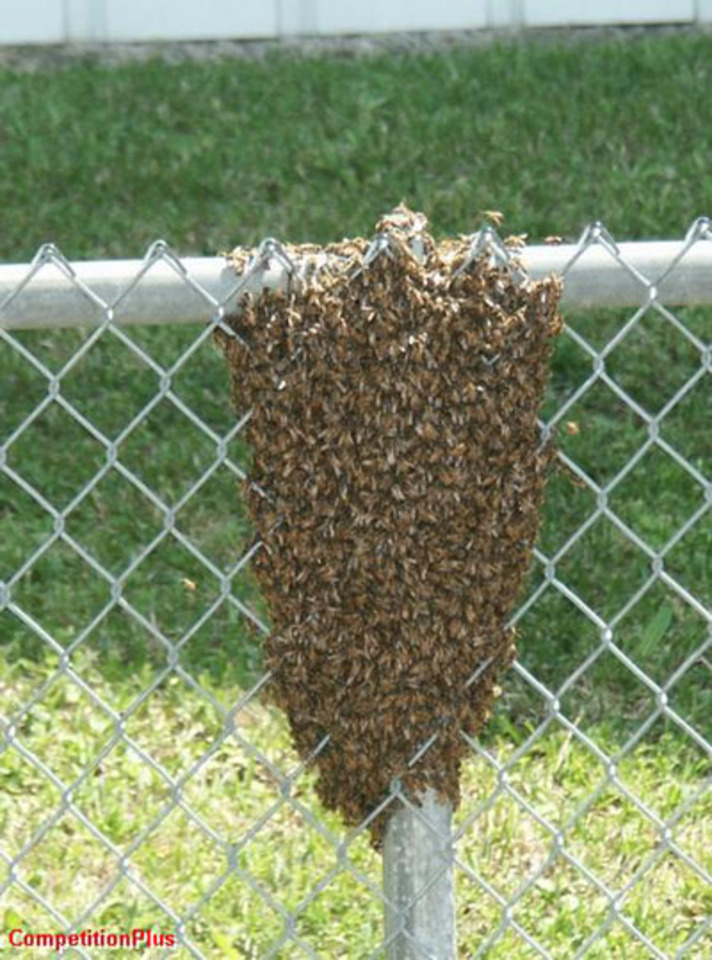What is a bee swarm?
A large number of bees - up to 15 or 20,000 from the originating colony seeking a newhome. Sometimes seen in flight as a large 'cloud' of flying insects - which may be quite
noisy and scary to the observer, but a swarm might be found more often temporarily
resting in a large cluster on a bush, car, fence, wall, or any other object.
Why do they swarm?
Swarming is the natural way for bees to propagate and expand the species.When do they swarm?
Usually around May - but a few weeks either side is not unheard of. Since the start ofspring the queen has been laying up to 1,000 eggs each day, and the colony starts to get
very crowded. This triggers the bees to raise a new queen and the old queen departs from
the hive with a significant number of older bees to form a swarm.
Where do they go?
The bees evolved over thousands of years to make their natural homes in a hole, tree,or cliff, but since we no longer have swathes of forest for them to live in, the closest to their
natural habitat that they will find (unless captured and hived by a beekeeper) is a hole in
someone's roof, wall, chimney, post box, bird box, shed - anywhere with a bit of protection
for them to set up home! As soon as they have settled, the bees will start producing
beeswax and making new combs. The old queen will start laying eggs within a few days
and the new colony will work overtime to increase their numbers and store enough food to
get them through the following winter.
What about the original old colony?
Still comprising of up to 20,000 younger bees, the new queen will hatch out a few daysafter the swarm has left and, after a successful mating flight, will start laying eggs at a
prodigious rate. By August the colony may number around 60,000 individuals!
Capturing a swarm.
Depending on the location of the swarm, a beekeeper will aim to get the bees into acontainer that can be sealed for transportation. If easily accessible, it may be possible to
knock the swarm into a cardboard or wooden box and leave to settle for a while. Less
accessible swarms may require the use of a bee vacuum to suck them into a container.
Swarms that are already in very difficult locations - chimneys, cavity walls, etc. - are likely
to be beyond the capabilities of most beekeepers and may require more specialist
attention to remove.

On a tree branch

On a fencepost
On the side of a box

In a tree

In a tree